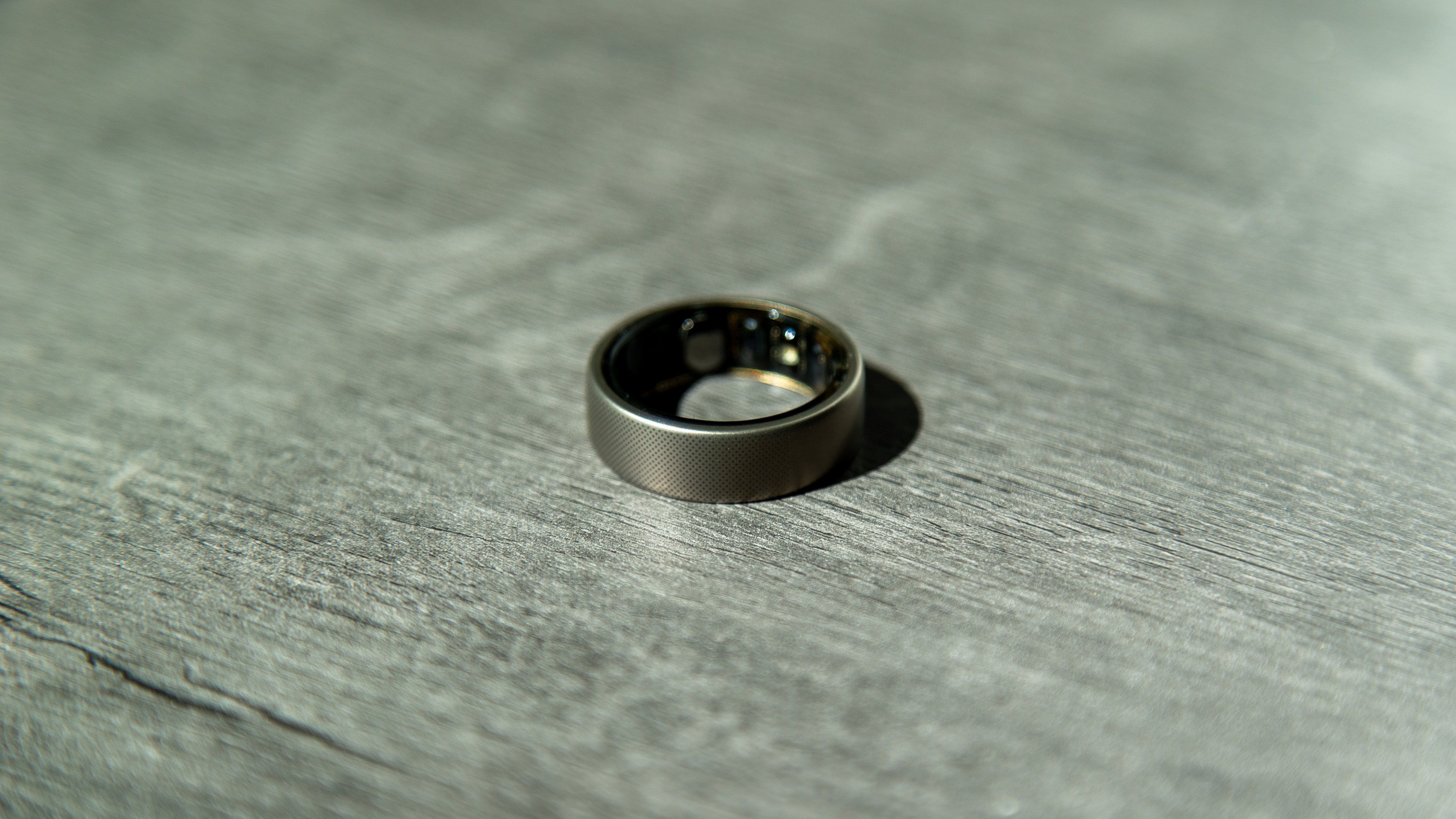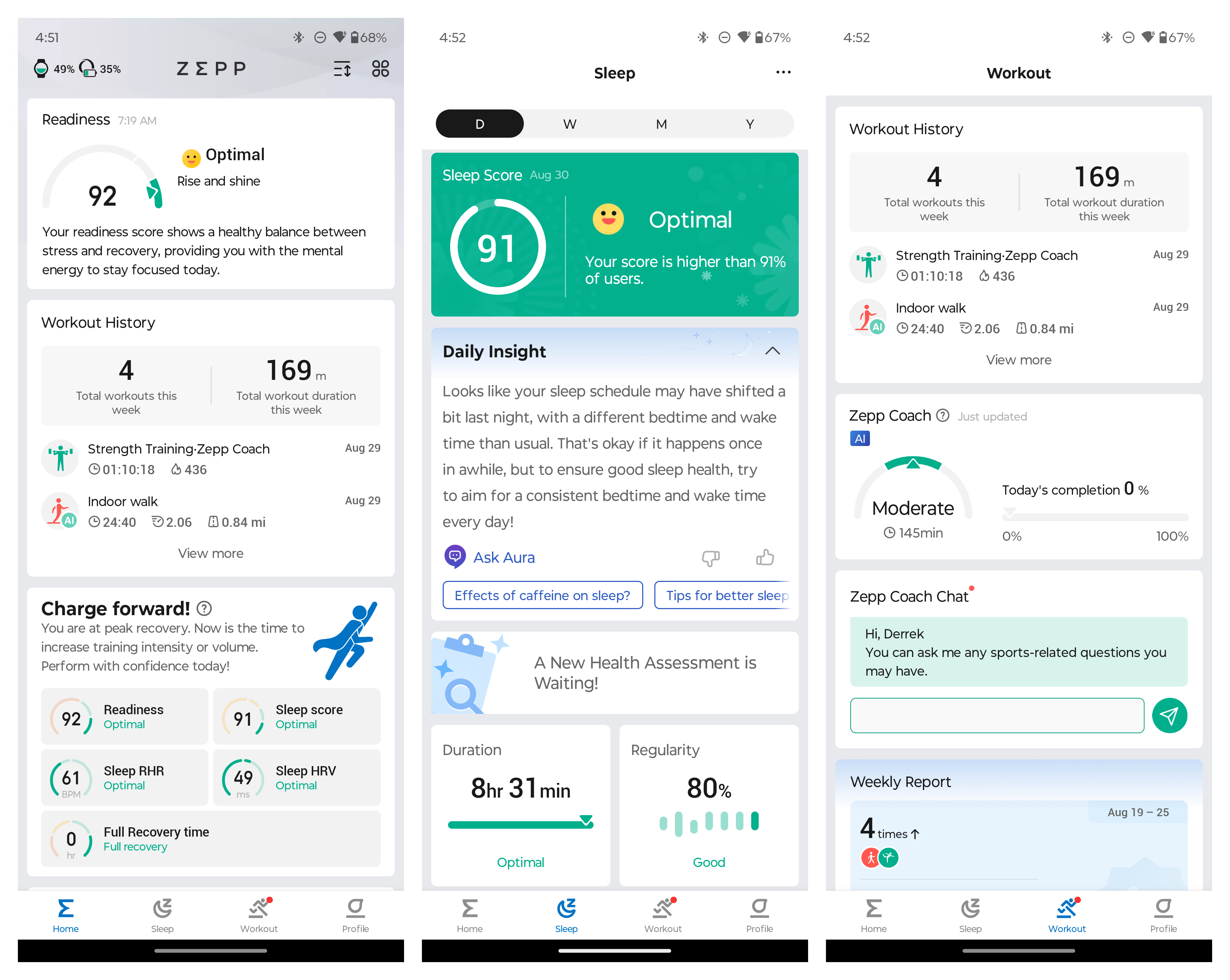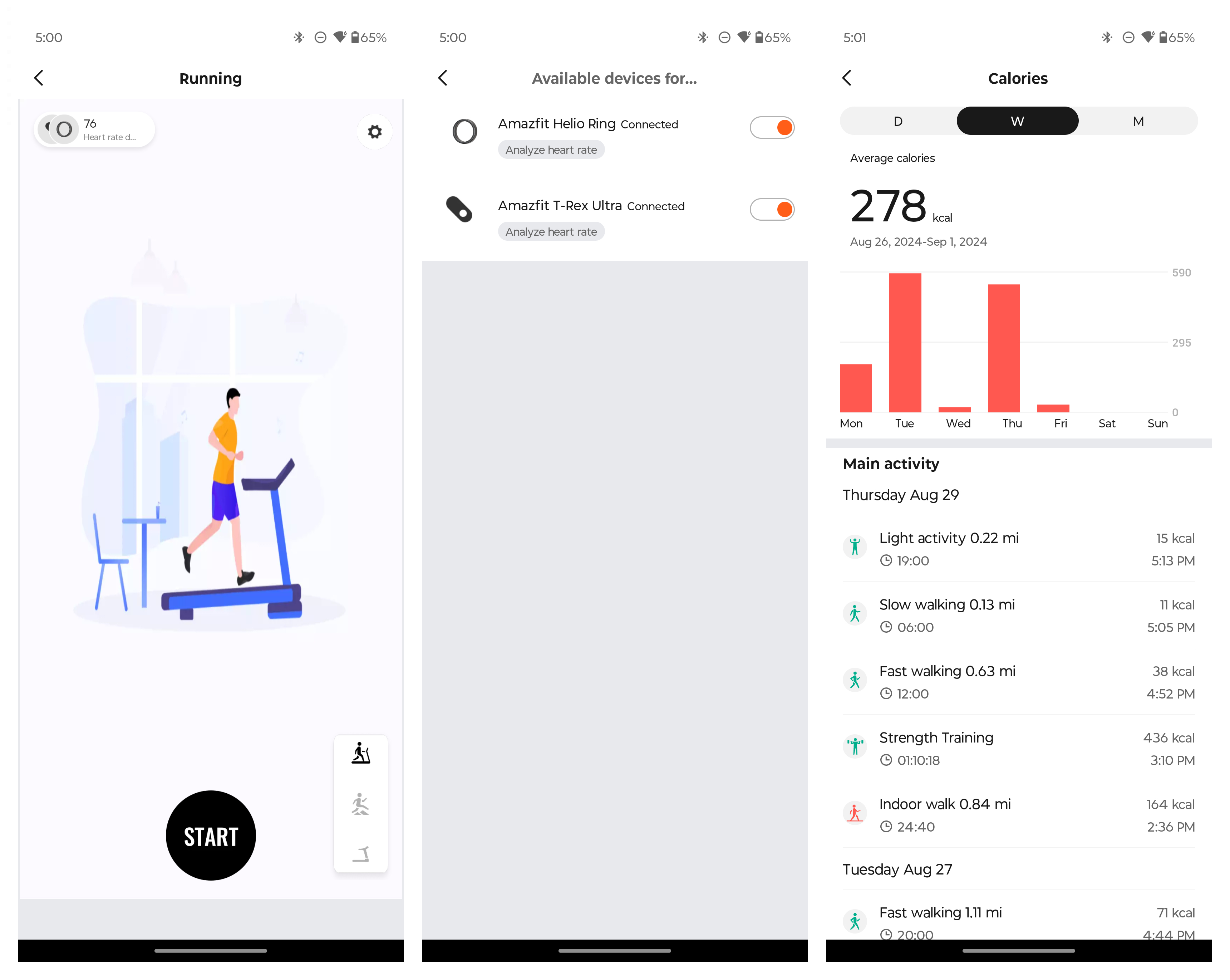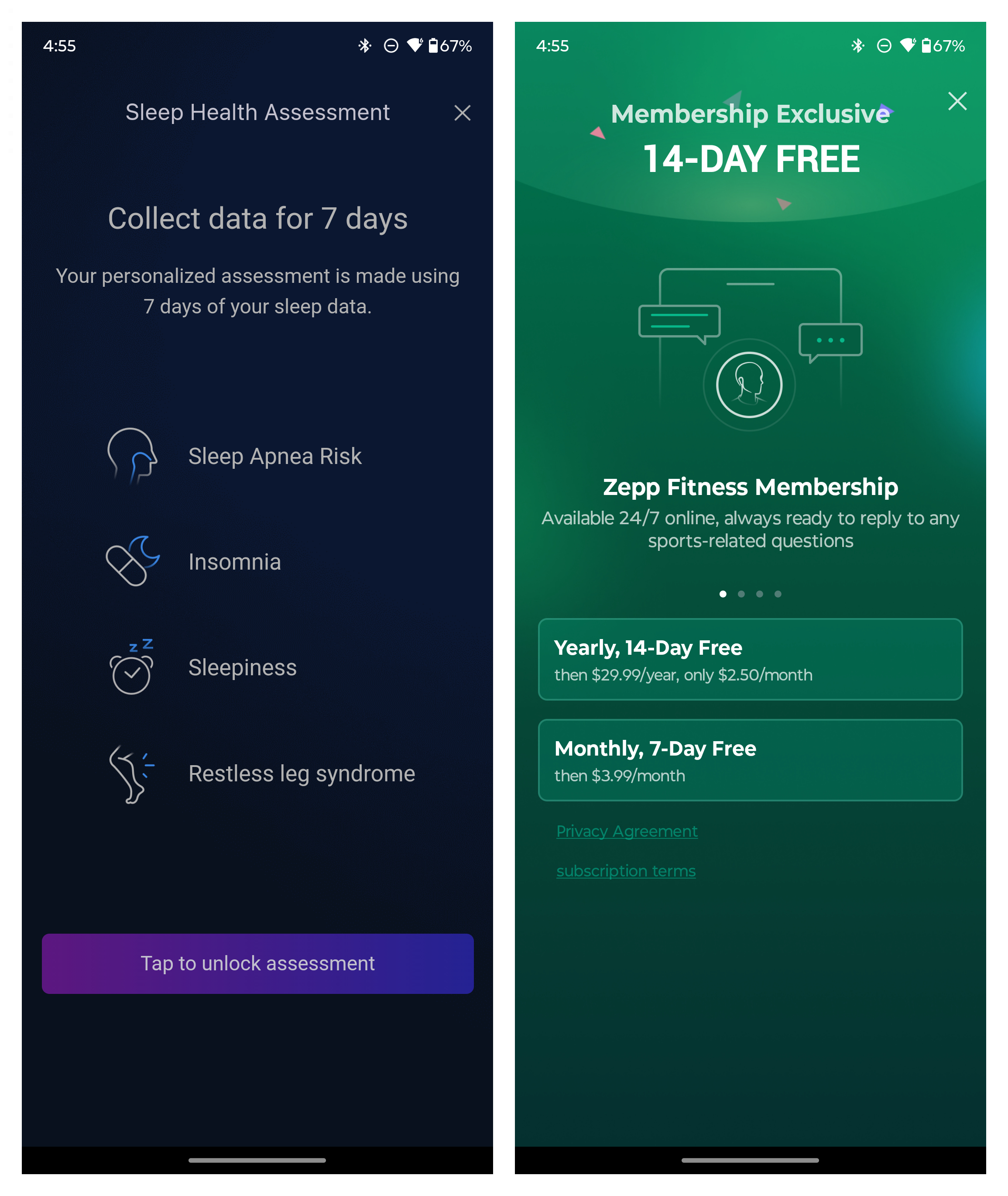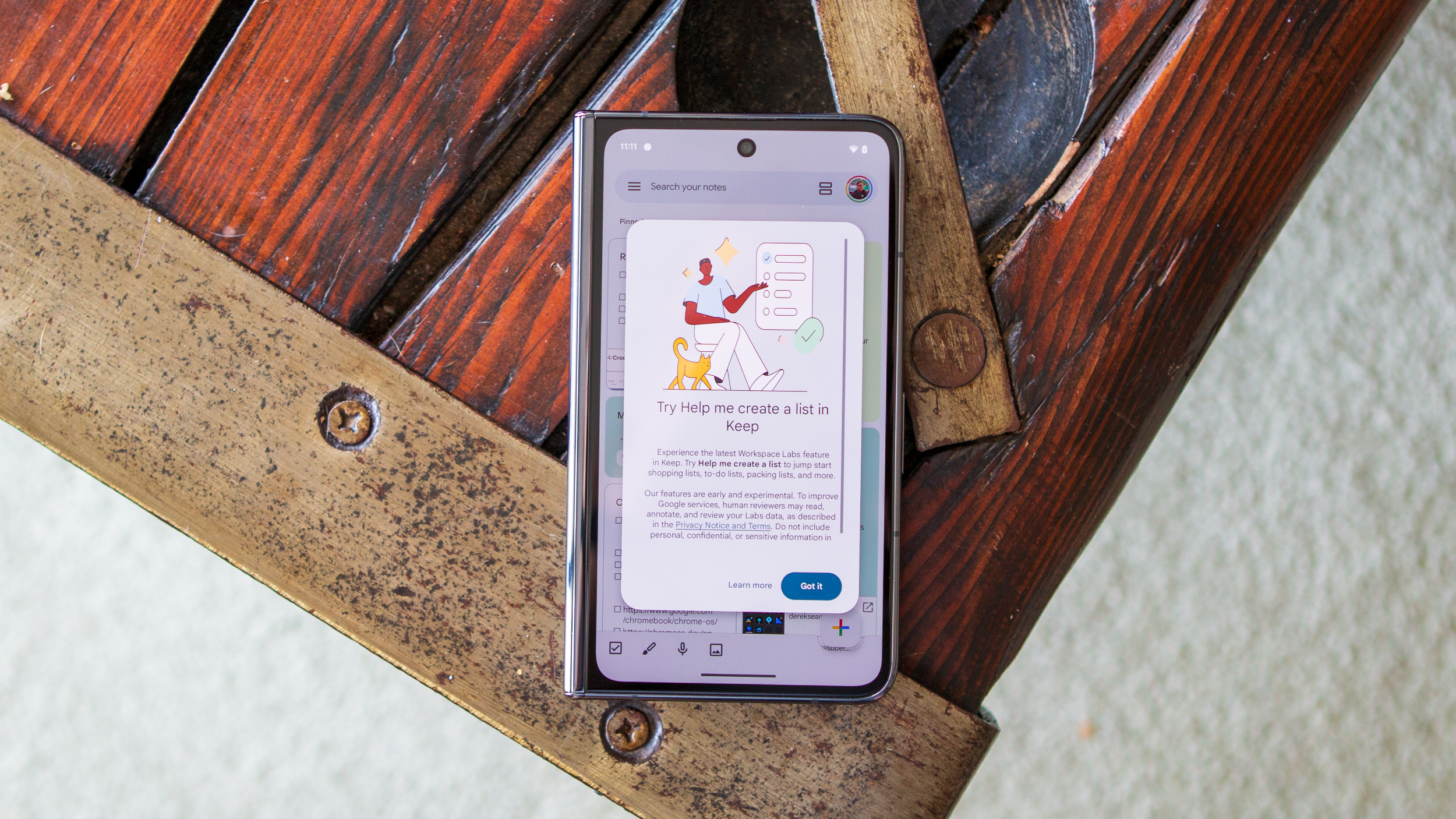Android Central Verdict
The Amazfit Helio Ring is a decent smart ring with basic health-tracking features and an easy-to-use app. Unfortunately, the ring lacks the battery life and feature set you'll find on other smart rings, while also promoting multiple subscriptions to access additional insights. Unfortunately, there are better rings you can get for the same price that don't have subscriptions.
Pros
- +
Nice design
- +
Simple and customizable app layout
- +
Subscription not needed for most functions
- +
New features continue to be added
- +
Connects to third-party apps
Cons
- -
Poor battery life compared to other smart rings
- -
App will throw subscriptions at you for certain functions
- -
No Health Connect integration
- -
Only two sizes
- -
Limited workout modes and auto-tracking
- -
Charging puck is frustrating
Why you can trust Android Central
With smart rings steadily making their way into the mainstream, it makes sense for companies that normally build smartwatches to step into the ring, so to speak. We quite enjoy Amazfit smartwatches, and so we were naturally excited about the prospect of an Amazfit smart ring. However, this first attempt from the company feels very much like that, and not really in a good way.
With impressive smart rings like the Oura Ring and even those from relatively unknown companies like RingConn and Ultrahuman, the Amazfit Helio Ring feels like a product that has so much potential but fails to quite reach it. It has a number of rather obvious shortcomings while being one of the few smart rings on the market to throw a subscription in your face, even if the company says it's not necessary.
That's not to say there aren't things to like about the Amazfit Helio Ring, and the company has been adding new features in the time since its launch. The company also smartly leverages AI to merge data from its smartwatches to get a full look at your health and performance. However, the ring feels more like a beta product, and I'm not sure the price tag really matches the value.
Amazfit Helio Ring: Price and availability
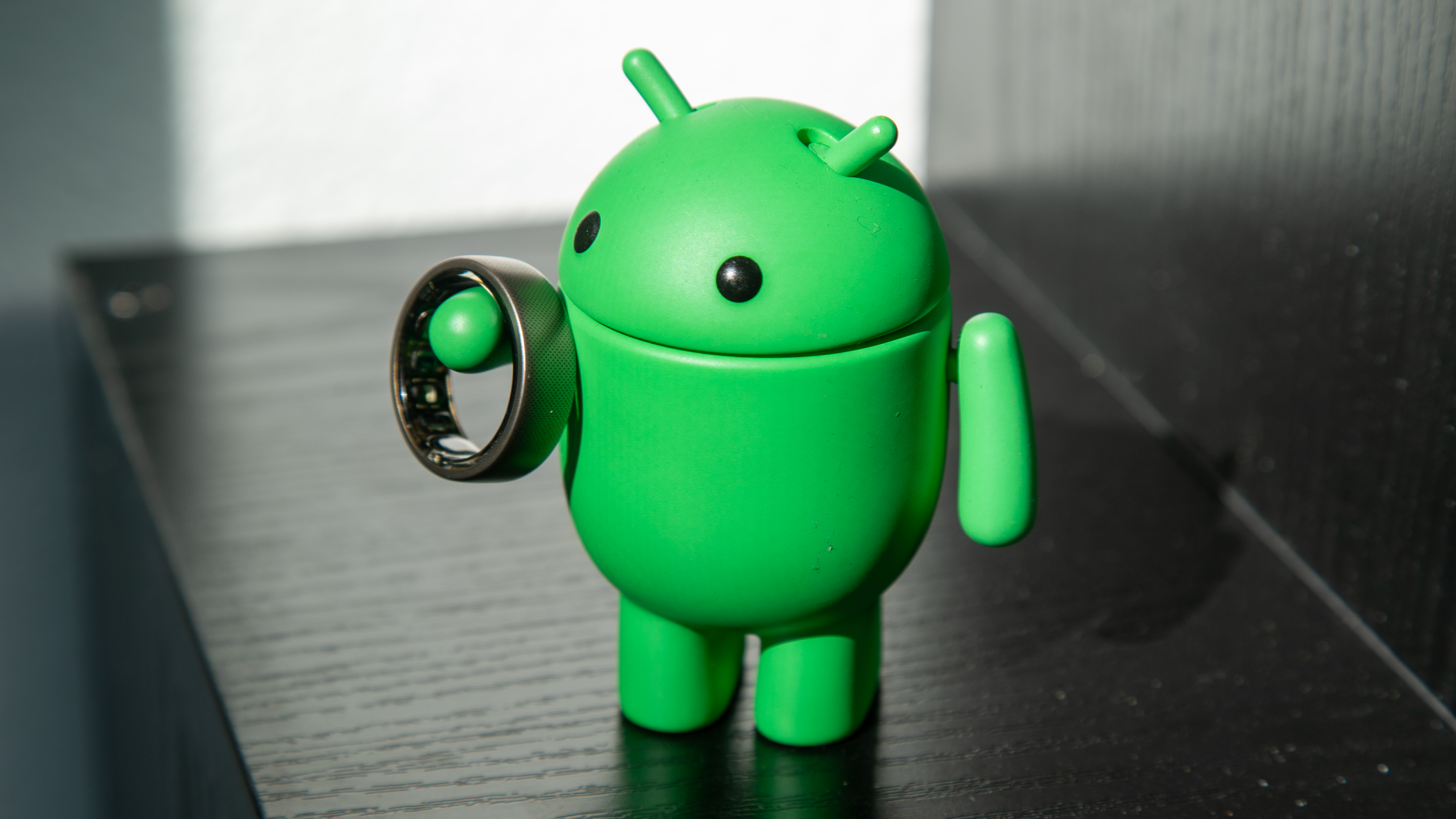
The Amazfit Helio Ring was announced in January 2024 but did not go on sale in the U.S. until May of the same year. The ring retails for $299, although it can be found at a discount at some retailers, going as low as $199.
The Helio Ring is available in one color and finish, although it can be purchased in three sizes: 8, 10, and 12.
| Category | Amazfit Helio Ring |
|---|---|
| Materials | Titanium alloy, resin |
| Protection | 10ATM |
| Sensors | BioTracker PPG heart rate, temperature sensor, EDA sensor |
| Movement | 3-Axis Acceleration, 3-Axis gyroscope |
| Battery | Up to 4 days, USB-C charging cradle |
| Connectivity | Bluetooth LE |
| Platform support | iOS, Android |
| Dimensions | 8mm (width), 2.6mm (thickness) |
| Weight | 3.65g (size 8), 3.75g (size 10), 3.82g (size 12) |
| Sizes | 8, 10, 12 |
| Colors | Titanium |
Amazfit Helio Ring: What I like
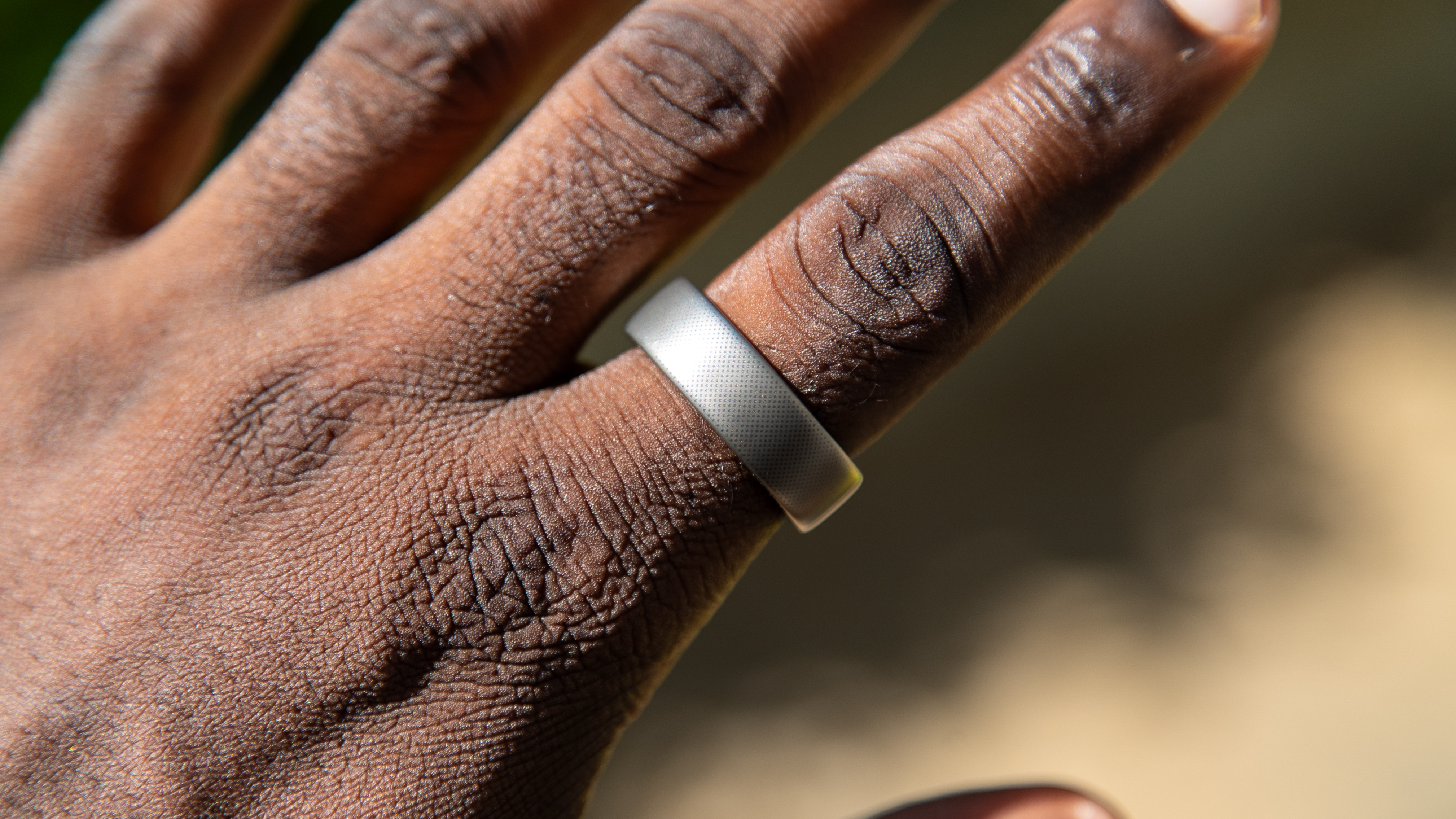
The Amazfit Helio Ring may not be the thinnest, slimmest, or lightest smart ring on the market, but the overall design is simple and elegant. I rather like the feel and finish of the titanium alloy, especially with the textured top section that lets you know whether or not the ring is on the correct path. The brushed metal not only looks great, but it handles the trials and tribulations of daily life better than my Oura Ring Gen 3 or other smart rings that have options for glossy finishes, as they tend to scuff and scratch very easily. In my time with the Amazfit Helio Ring, I haven't had to worry about that, despite wearing it during workouts.
Additionally, neither the weight nor the thickness bothers me. Perhaps I've gotten used to the feel of smart rings, but the Amazfit Helio Ring doesn't feel as heavy as it looks.
Get the latest news from Android Central, your trusted companion in the world of Android
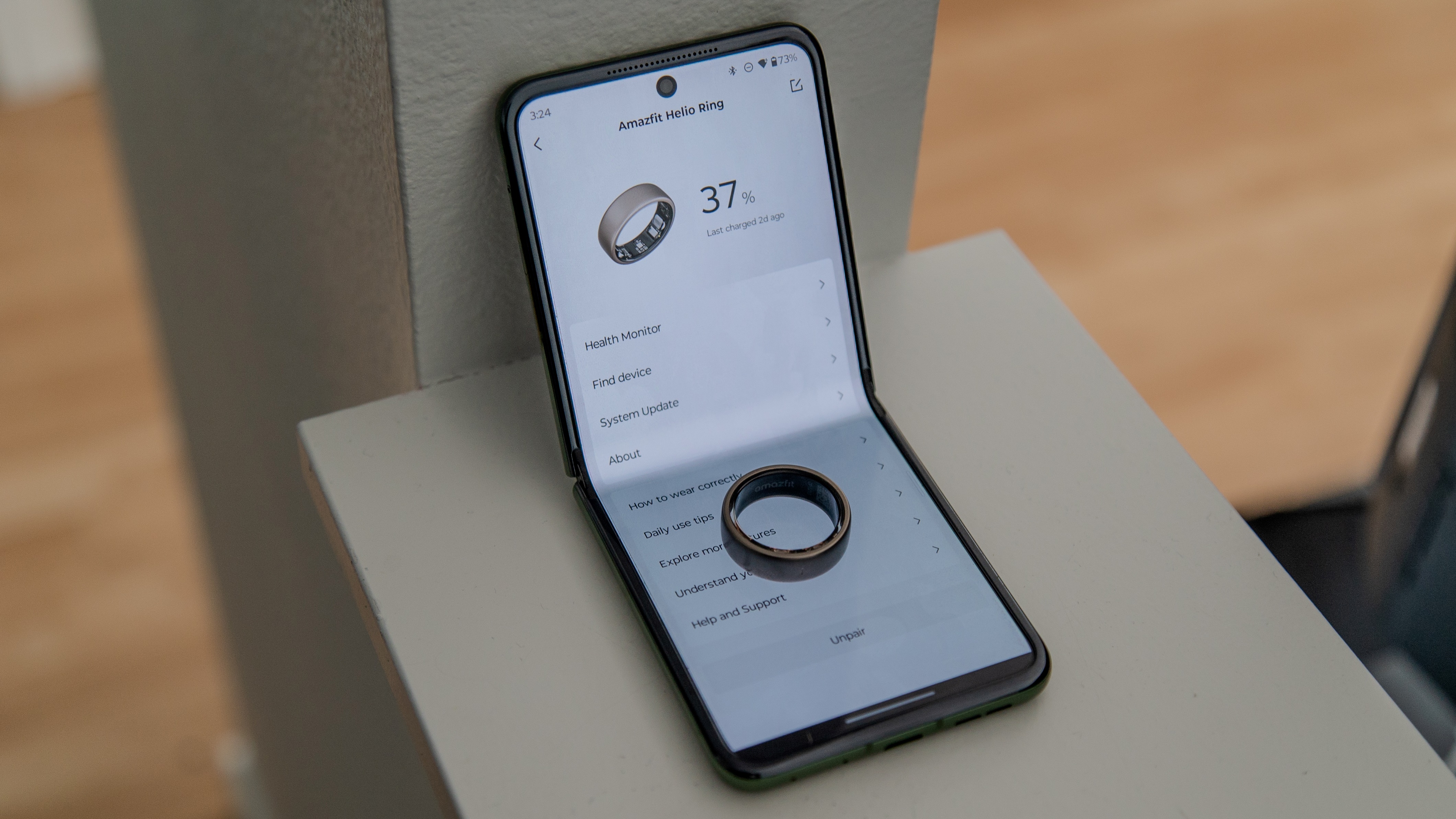
Aside from the actual ring, the Zepp companion app is also quite nice and has a very easy-to-use layout that you can customize to your liking. Each metric gets its own card, and they can be arranged in a way that makes sense for what you're focused on most; I keep my Readiness score at the top, followed by my workout history for a quick glance at my week, and then a Training Recovery Card, followed by other individual metrics.
The bottom has just four tabs for quick navigation to your sleep and workout data, as well as your profile. The latter option lets you view and add devices to the app if you have a smart ring and Amazfit smartwatch, and you can dive into each device to enable or disable health features and update the firmware. You can also quickly jump to each device in your app from the Home tab just by tapping their respective icon in the top left corner.
The app will inform you on how to wear the ring correctly, provide daily use tips, and more so that you can understand the ins and outs of using the ring. Additionally, you can set daily goals like target steps, weight, and sleep. The Zepp app also supports third-party app linking, with popular options like Strava and Adidas Running.
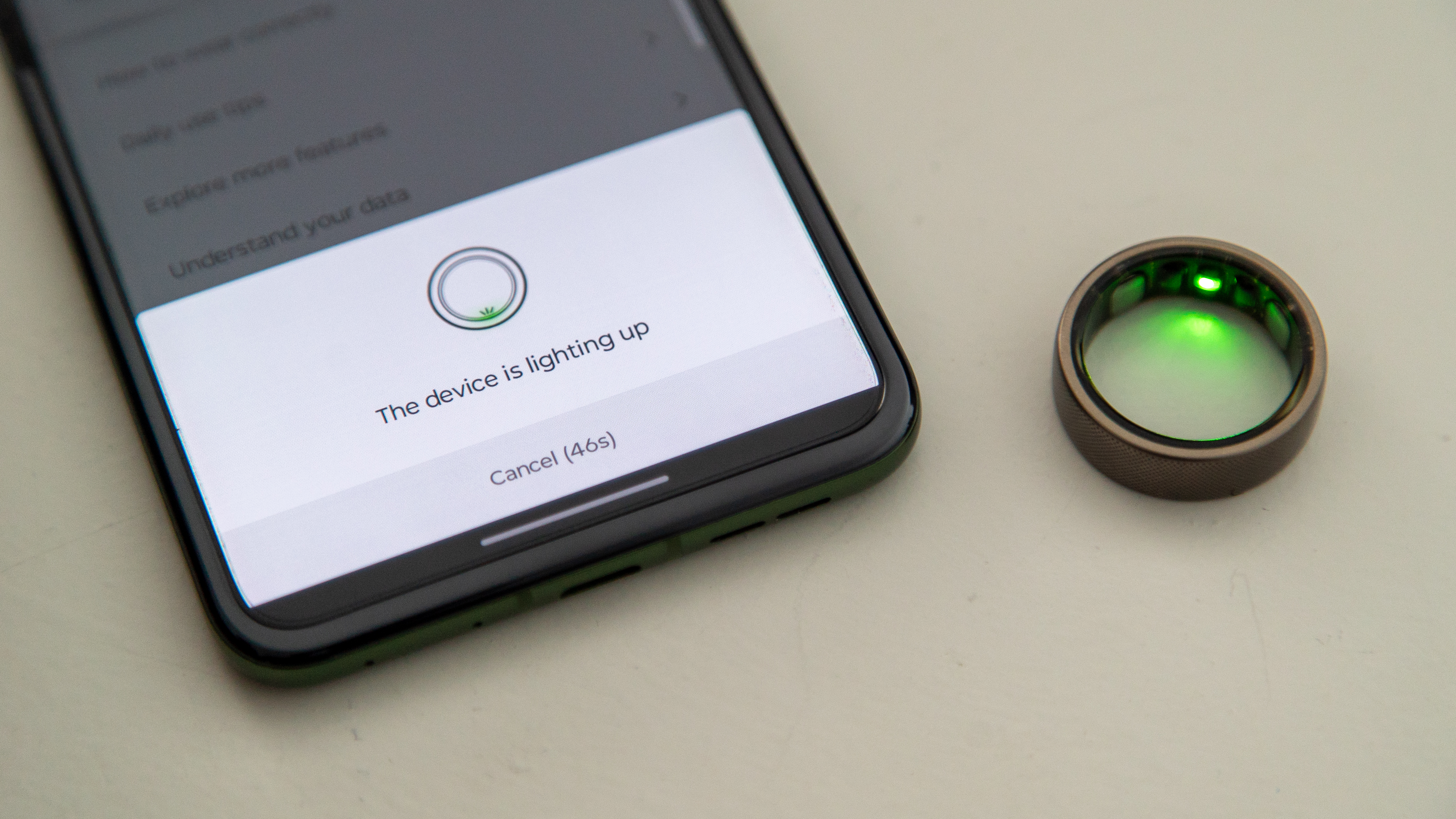
One feature that was added in August was a Find Device function, which will turn on the green LED to hopefully make the ring easier to find. This is a function I first saw on the Samsung Galaxy Ring, and I thought it was pretty genius since I have a tendency to misplace my smart rings. How helpful this is remains to be seen, but it's better than nothing (looking at you, Oura) since a ring can't exactly emit any audible sounds.
Amazfit Helio Ring: Health tracking
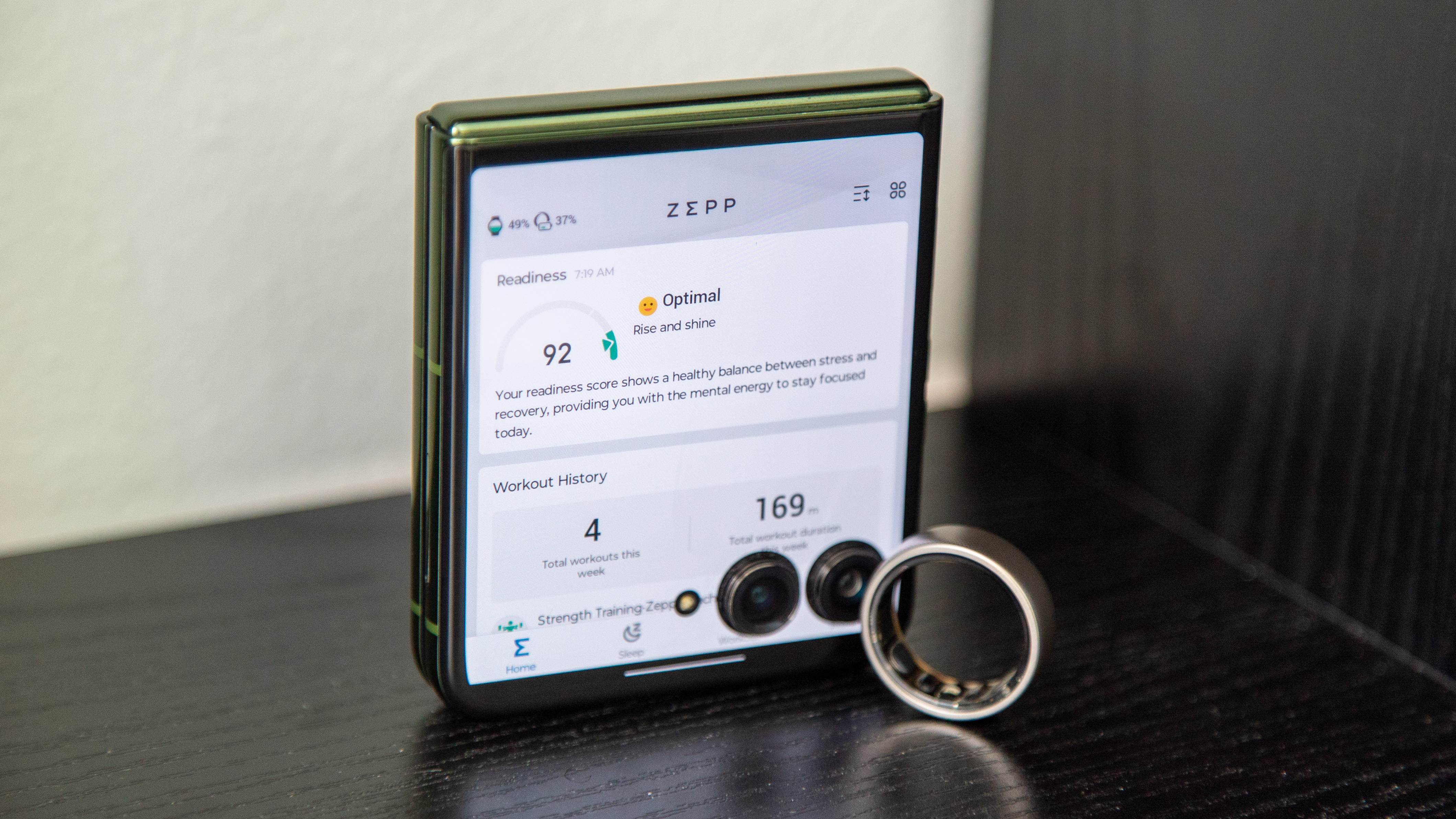
Health tracking is pretty standard on the Helio Ring. It has a PPG heart rate monitor, temperature sensor, and EDA sensor. It's capable of monitoring blood oxygen levels, stress, and menstrual cycles, which is par for the course when it comes to smart rings. That is to say, none of it's particularly groundbreaking, but it will give you the information you need.
Sleep tracking doesn't feel as detailed as what you'd get on other rings, but I think that's largely because the information is presented in such a way that makes it easy to see how you slept. You get a sleep score based on the various factors, and so far it closely matches the scores I would get from my Oura Ring and Fitbit. You can also expand the sleep stages graph for a better visual representation of your total sleep time, or you can refer to the individual cards to see how long you were in each sleep stage.
In addition to heart rate variability, one interesting feature is the Sleep breathing quality, which is currently in beta and can help detect signs and symptoms related to sleep apnea. The Helio Ring will look out for and monitor the number of "episodes" you have during your sleep, which could be handy for people who suspect they may suffer from sleep apnea or are trying to track and lessen their symptoms.
Workout tracking is pretty basic, which is usually the case for smart rings since these are more focused on health and not exactly targeted for fitness use. However, there are several workouts you can track from the app when using just the Helio Ring, including running, walking, and cycling. I actually like that you can specify if you're running outside or on a treadmill, and the app will use your phone's GPS if it's the former.
That said, there's no way to actually track things like lifting weights, which I'm more likely to do than go on a run. That's where a smartwatch comes in, and it's something Amazfit is counting on. The company is leveraging some useful AI techniques that will include and de-duplicate data added from an Amazfit smartwatch so that none of it overlaps. That way, you can track a workout on the watch and then track a run later with the ring (or wearing both), and the app will fuse the data.
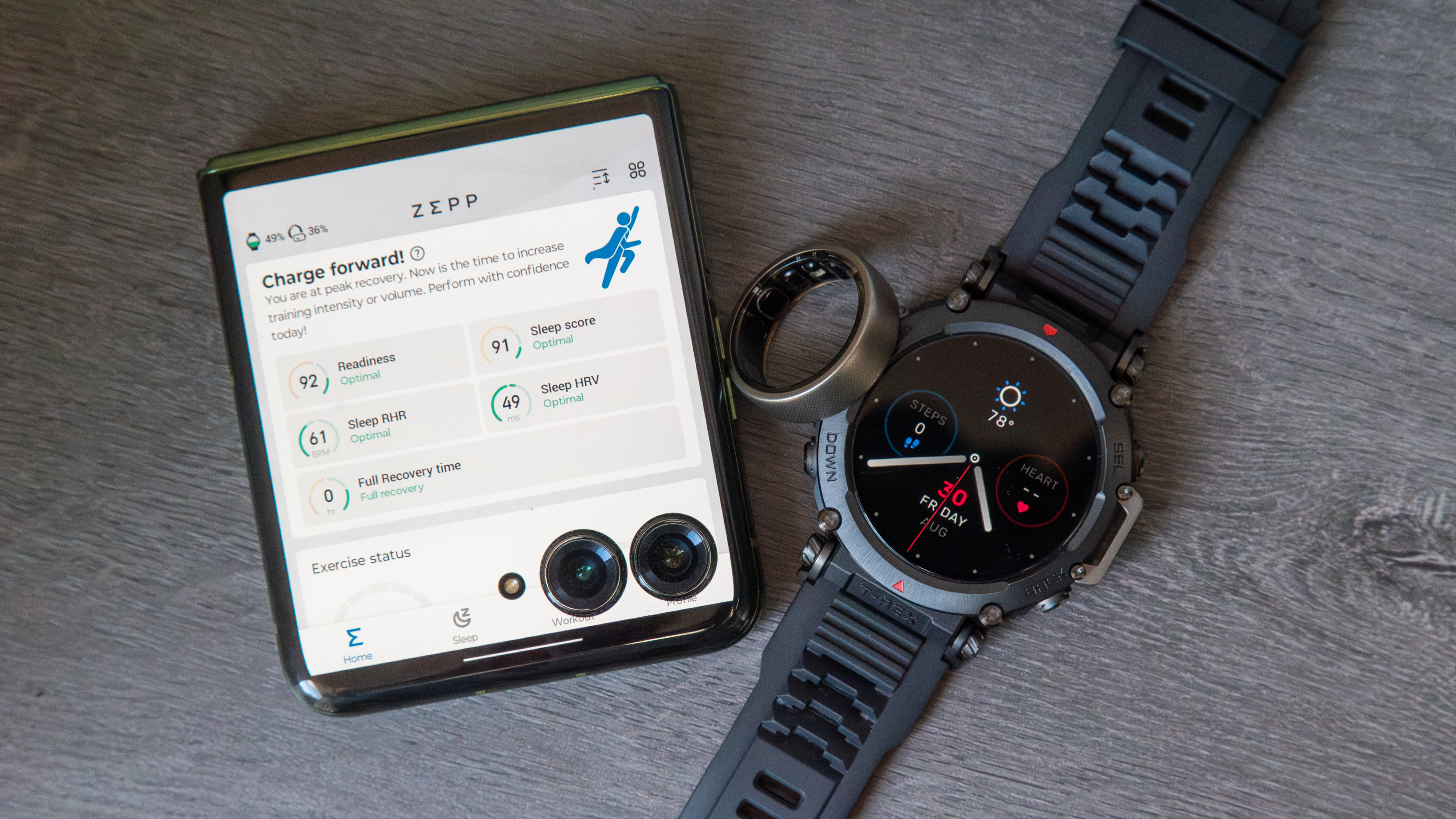
In fact, I spoke to Gregory Heard, product manager for the Helio Ring, about the differences between using a ring and watch when tracking data and whether one is "better" than another. He says that determining which is "better" sort of misses the point, and that they're meant to be used interchangably.
"Generally speaking, both rings and watches are great technologies for understanding your body, encouraging a healthy lifestyle, and tracking your athletic performance, both in real-time and over time," Heard told me in an email. "But they excel in different situations."
"Many people find watches uncomfortable for sleeping, but rings are a great for this. Conversely, a sports watch is much better for your workouts because it displays all your metrics during activity, and doesn’t have to be tethered to your phone for things like GPS tracking. We consider them different tools for different jobs."
This is a smart approach since it's how I've found myself using smart rings. With Oura, the extra data comes from app integrations like Strava, which aren't always reliable or will duplicate data that the ring has already tracked itself, which I sometimes find frustrating.
For the purposes of the review, I wore the Amazfit T-Rex Pro for weightlifting and the ring for other things like running and sleeping, and I wasn't worried about any of the data being duplicated. I like that it even lets you choose which device to use to track your heart rate when you select the Helio-supported workouts.
Unfortunately, there's technically no automatic workout tracking, but the ring will log certain activities in your calorie card, which I find interesting. It will tell me if I was walking slow or fast, or if I was doing a light activity.
The Helio Ring has many basic health-tracking features but misses out on some big ones or relies on a connected smartwatch to fill in the blanks.
As for step counting, the Helio Ring performed surprisingly well in our multi-smartwatch/smart ring step test, logging the fewest errors of any other device. There are times when I've noticed it will deviate by a few hundred steps when compared to my Pixel Watch 2 or Garmin Venu 3, so I always caution that you should take smart ring step counts with a grain of salt, but overall, I find that it doesn't suffer as much from the phantom steps that my colleagues have complained about with other rings, where they will find thousands of steps logged while barely having moved during the day.
The ring has an Auto Emotions Monitor, which will check your emotional well-being throughout the day and help you understand your stress. It reminds me of a very similar feature on my Pixel Watch 2, but I haven't found this to be particularly useful, and I find it kind of stressful when an app tells me I'm stressed.
All of this comes together to feed the Readiness score, which takes all your metrics into account to help you determine how best to tackle your day. Tapping on this card will provide you with insight into what contributed to your score and advice on what you can do to maintain it or take advantage of it.
Amazfit Helio Ring: What I don't like
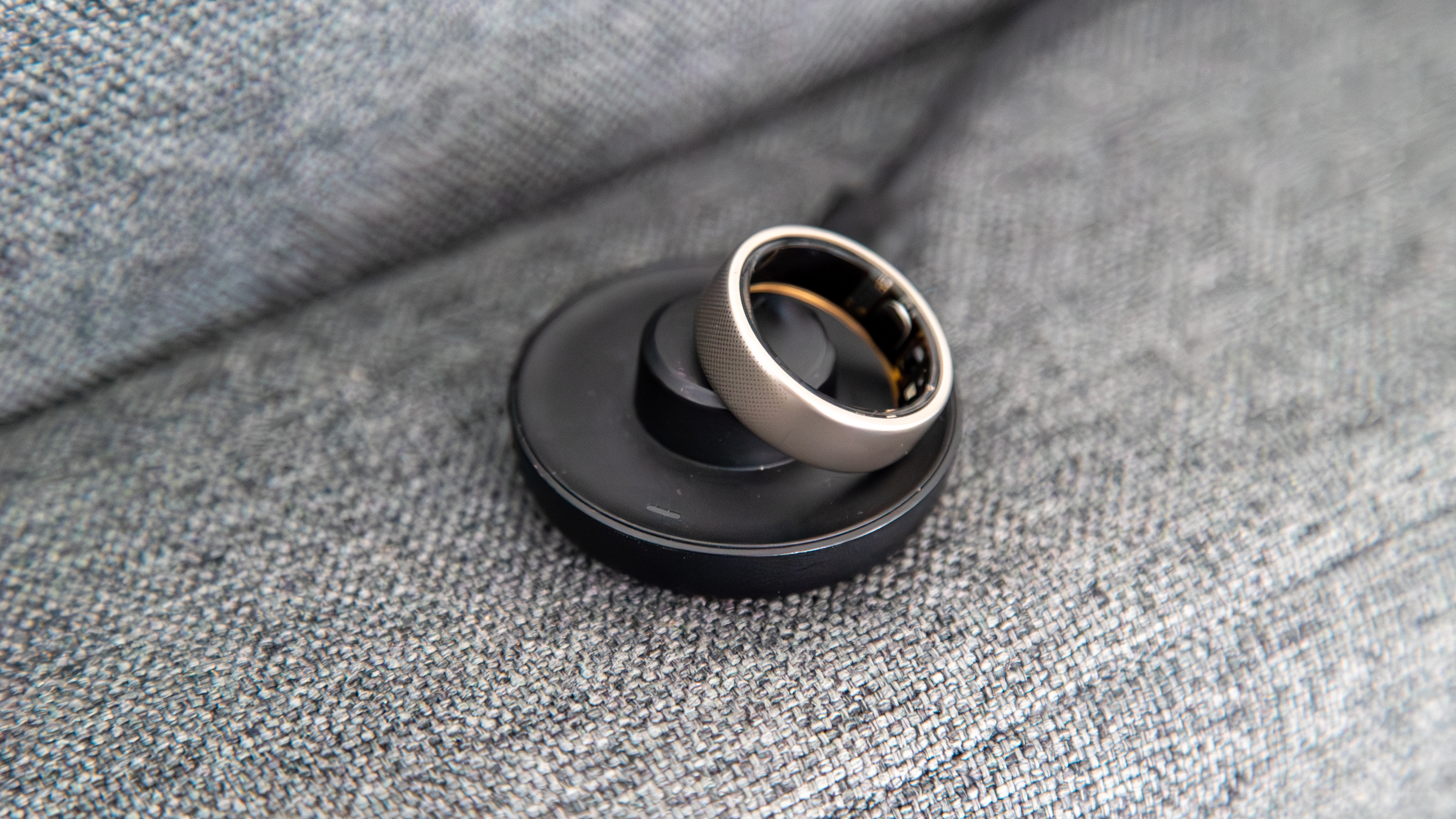
Unfortunately, one of the Helio Ring's biggest downsides is its battery life. While many of the more popular models last seven days or more, the Helio Ring only lasts four days, and even that's not a given. Toggle on some of the health tracking features, and you'll be met with a warning that they will "greatly" or "significantly" reduce battery life.
Four days is much better than many Android smartwatches, particularly those running Wear OS, but it's woefully behind other smart rings. Given its size, I'm surprised Amazfit wasn't able to fit a larger battery into the ring.
Additionally, when it's time to charge the ring, the included charging puck is a bit frustrating to use. It's shaped largely like the one that comes with the Oura Ring, but the divots on the puck to fit the ring sensors make it annoyingly hard to just drop the ring on and charge. I find myself fiddling with it more often than now.
Another problem is that this ring is only available in three sizes, while other devices are offered in eight or nine sizes. That's one more than at launch, but it's extremely limited when smart rings are expected to have a certain fit to work properly. Those with smaller fingers may find themselves out of luck if they're looking to purchase a model, while those with larger fingers may find it difficult to get a proper fit on the recommended digits.
In addition, you only get one color and finish, so there isn't much in the way of selection when buying it. While I like the design, it would be nice to have a silver or rose gold option for anyone who doesn't care for the gold-esque Titanium color.
If Amazfit is hoping to sell a lot of these, it certainly doesn't show.
Lastly, while Amazfit highlights that there are "no subscriptions required," there are still subscriptions, and the app does a good job of hiding them and popping them up when you least expect it. Want deeper insights into your sleep or access to your weekly fitness report? Sign up for not one, but two different prescriptions. Even the AI chatbot Aura is limited in it functionality until you sign up.
It's quite clever to hide these subscriptions in the app, but while they're not necessary for most functions, it still feels quite disingenuous to have them when most other smart rings, aside from Oura, don't require subscriptions.
Amazfit Helio Ring: Competition
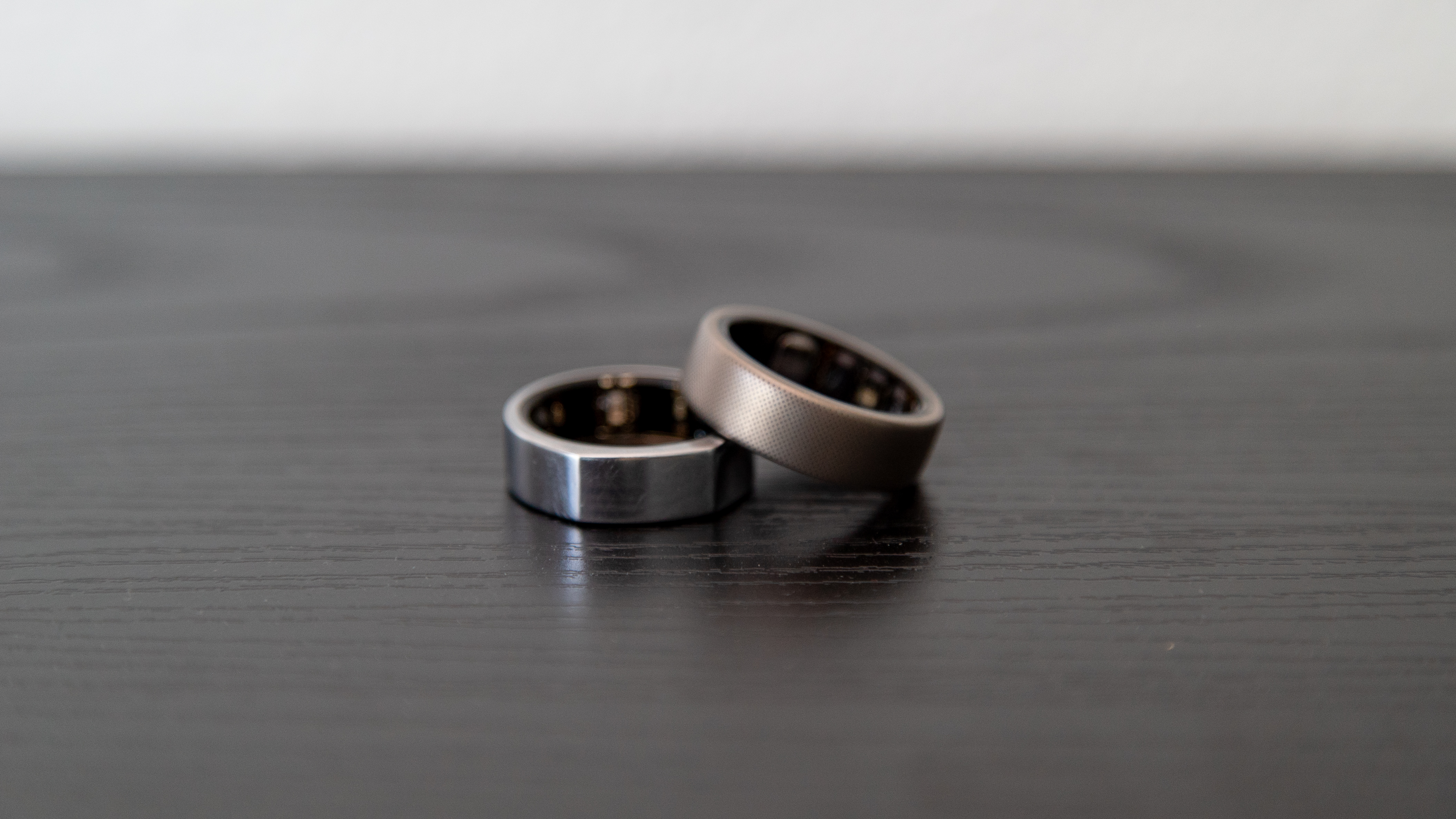
If you're in the market for a smart ring, there are quite a few to choose from, but the Oura Ring Gen 3 has pretty much set the standard. Despite launching in 2021 and being a bit rough around the edges, the ring has come a long way, adding more and more features throughout the years and essentially being the one to beat. That said, it does get expensive and can go for more than $500, depending on the finish you get. However, it's much more feature-rich and has a battery that will last about a week.
If you want something with even more battery life, the RingConn Gen 2 Smart Ring can last up to 12 days on a single charge and comes with a charging case. It also comes in more sizes and finishes, and it supports sleep apnea detection. Unfortunately, you won't find automatic workout tracking in any form, and there's no connection to smartwatches that the ring can take advantage of.
That's where the Galaxy Ring comes in, which is the current newcomer in the smart ring space. While the ring is a bit more expensive and rough around the edges, it does come with the benefit of Galaxy AI and even has unique smartphone gestures that let you capture photos remotely or turn off alarms.
Amazfit Helio Ring: Should you buy it?
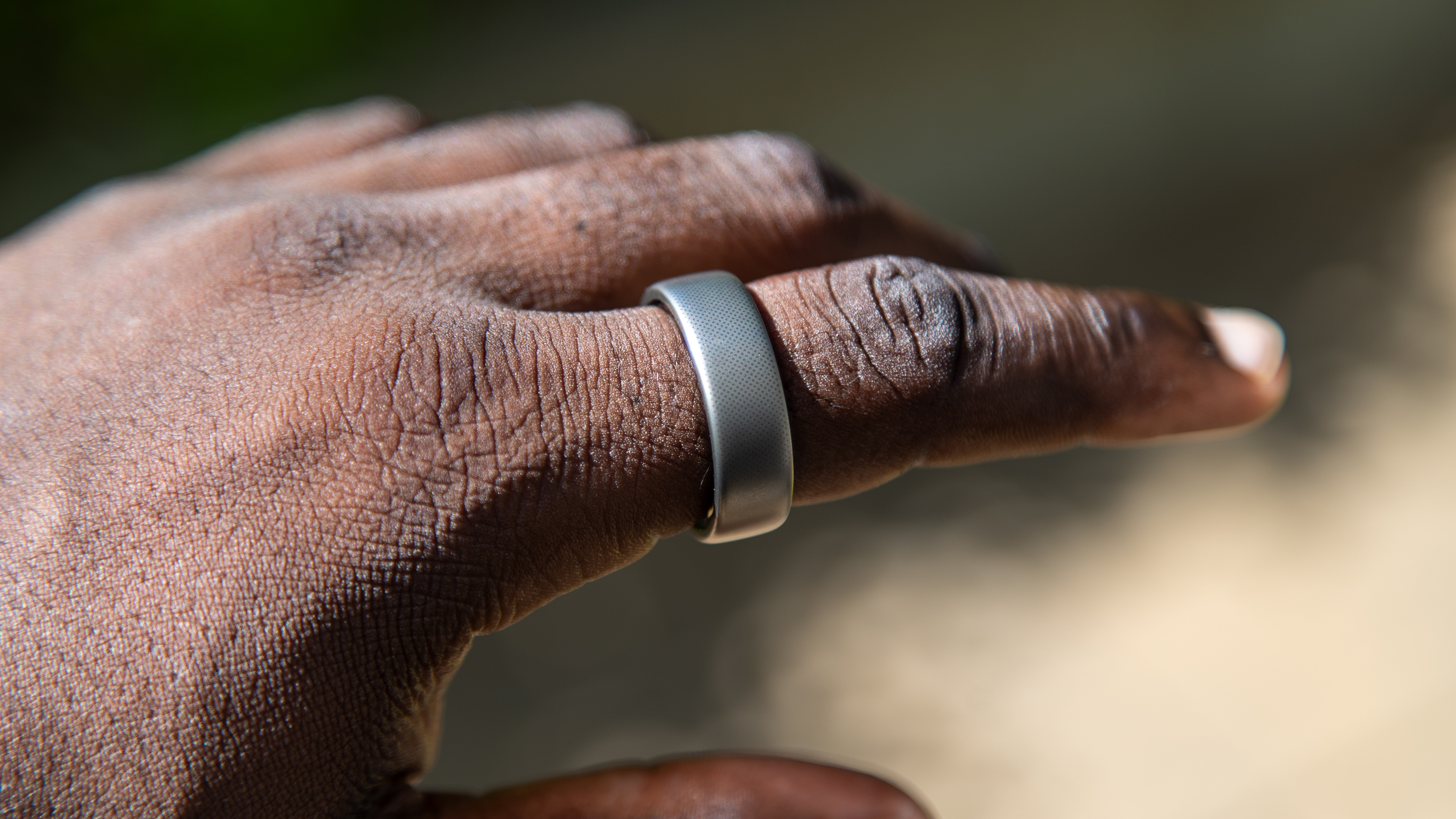
You should buy this if...
- You own an Amazfit smartwatch
- You may suffer from sleep apnea
- You want a ring that will track your stress and emotions
You shouldn't buy this if...
- You want a smart ring with great battery life
- You have smaller fingers
- You won't own an Amazfit smartwatch
Just like how some of the features are in beta, the Helio Ring itself feels like a beta product. There's no denying there's quite a bit of potential here with how the app combines data from a smartwatch to contribute to your Readiness score, but the device just falls behind on some of the most important aspects of a smart ring. Battery life is the biggest thing, and while it's not terrible, it's still behind the pack.
There also just isn't much choice when buying a Helio Ring, which makes me feel like little thought was put into making a smart ring. That's surprising, given the company's impressive lineup of smartwatches.
As a basic health tracker, the Amazfit Helio Ring gets many of the basics right with a durable design and a fairly accurate step counter. But for this price point, you'd be better off just getting an Oura Ring or even a RingConn Gen 2 Smart Ring. However, it may be worth a look if you can get the ring at a discount.
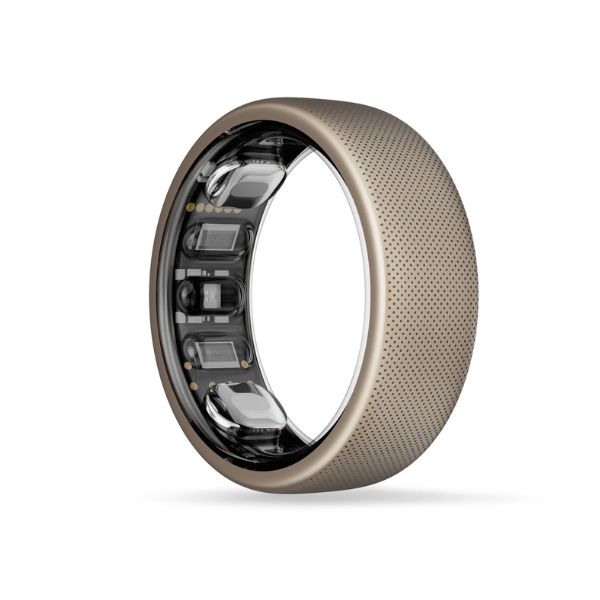
Your Amazfit companion
The Amazfit Helio Ring is a decent smart ring that features many of the basics when it comes to health tracking. It's also a great option for sleep tracking, especially for anyone suffering with sleep apnea. If you already have an Amazfit smartwatch, this might be a great companion for times when you don't want to wear a bulky watch.

Derrek is the managing editor of Android Central, helping to guide the site's editorial content and direction to reach and resonate with readers, old and new, who are just as passionate about tech as we are. He's been obsessed with mobile technology since he was 12, when he discovered the Nokia N90, and his love of flip phones and new form factors continues to this day. As a fitness enthusiast, he has always been curious about the intersection of tech and fitness. When he's not working, he's probably working out.
You must confirm your public display name before commenting
Please logout and then login again, you will then be prompted to enter your display name.
